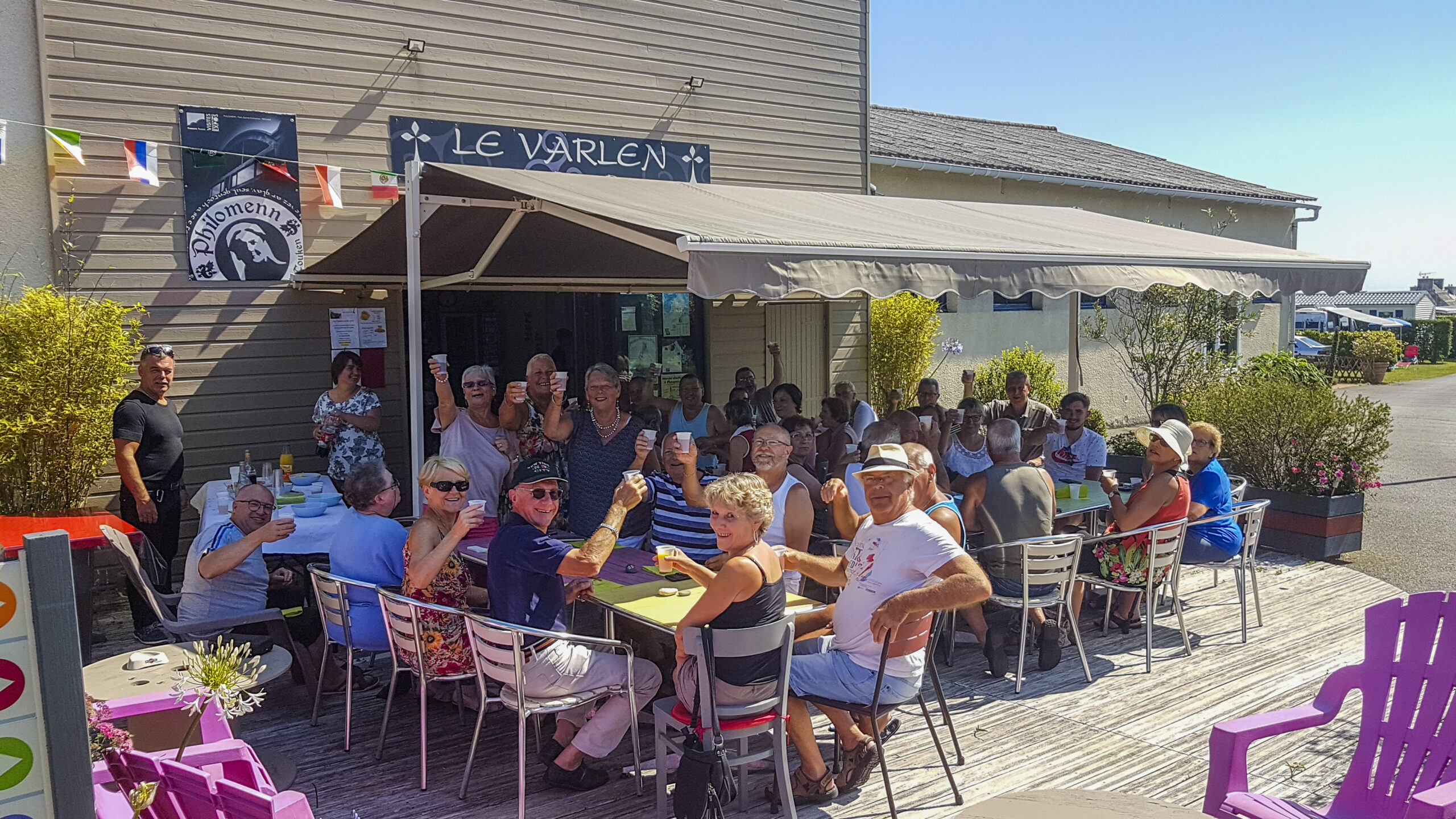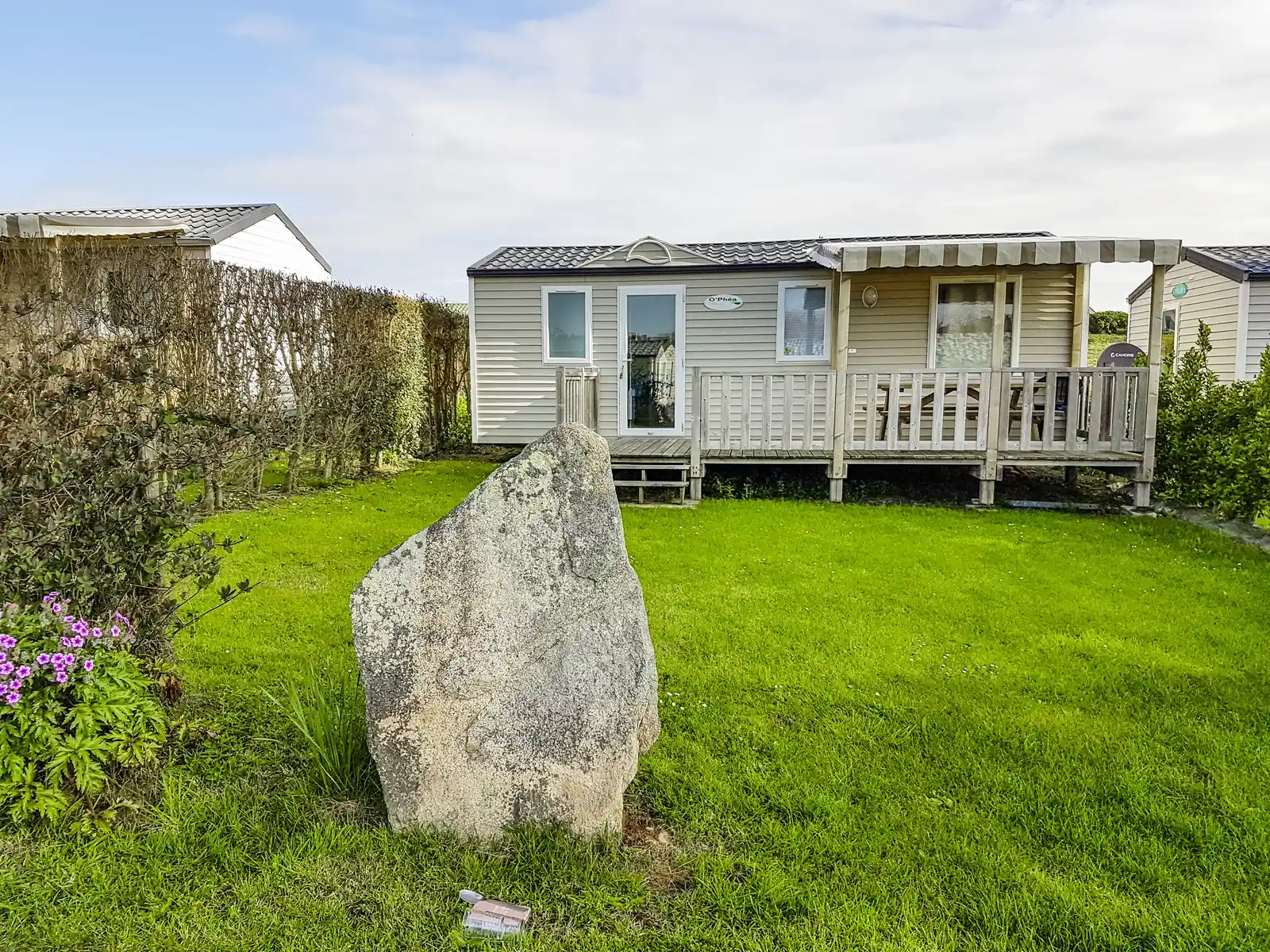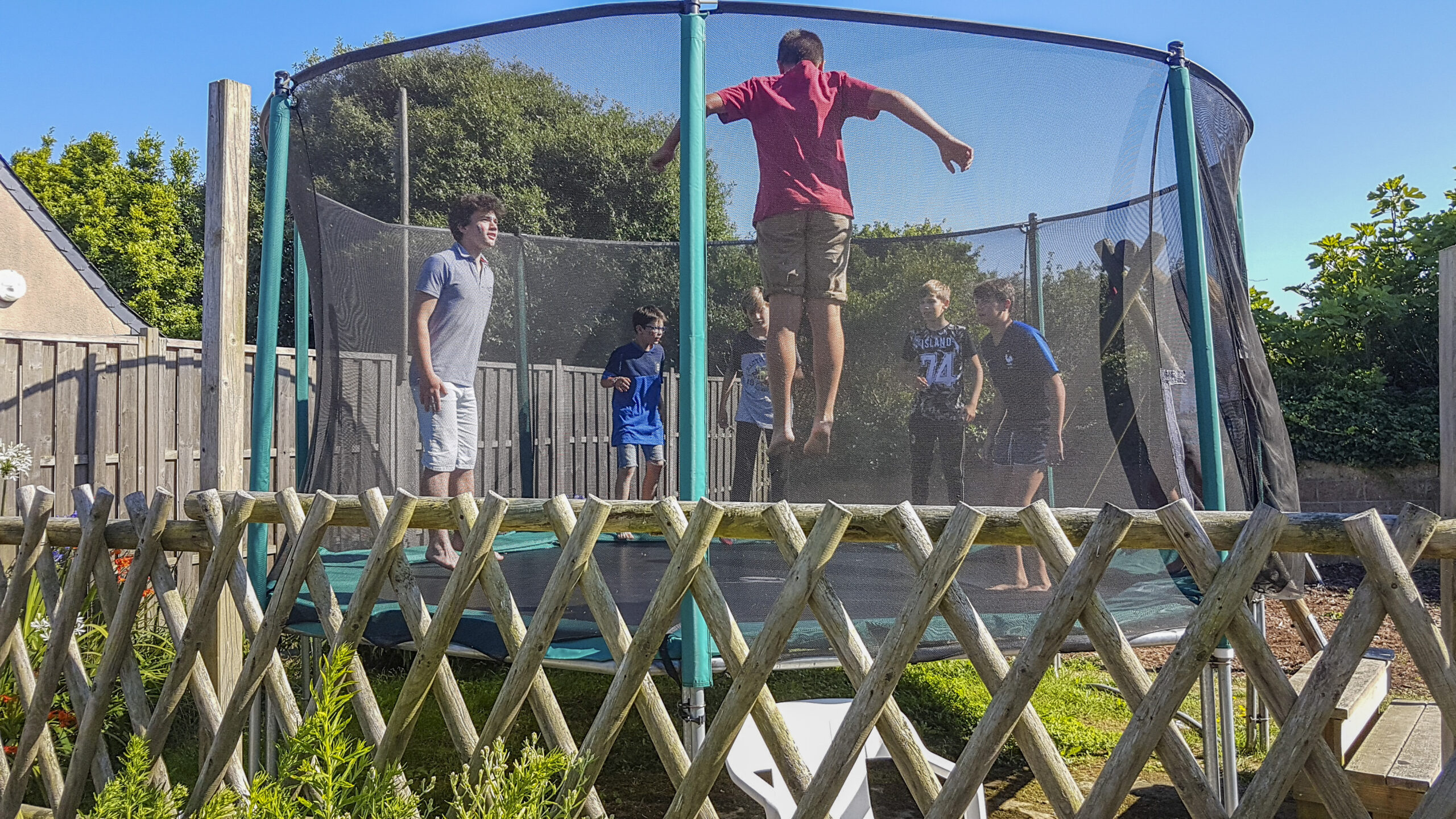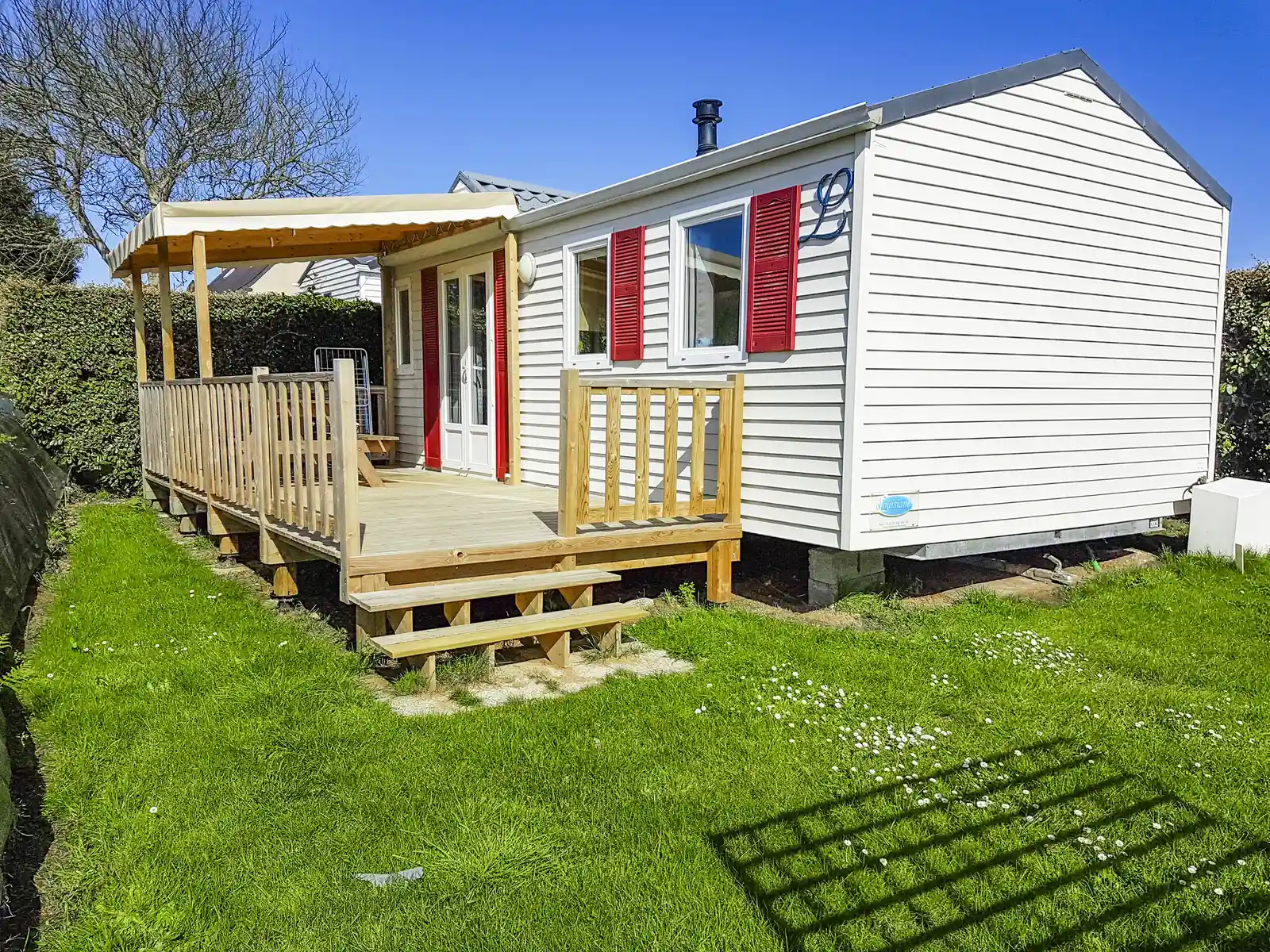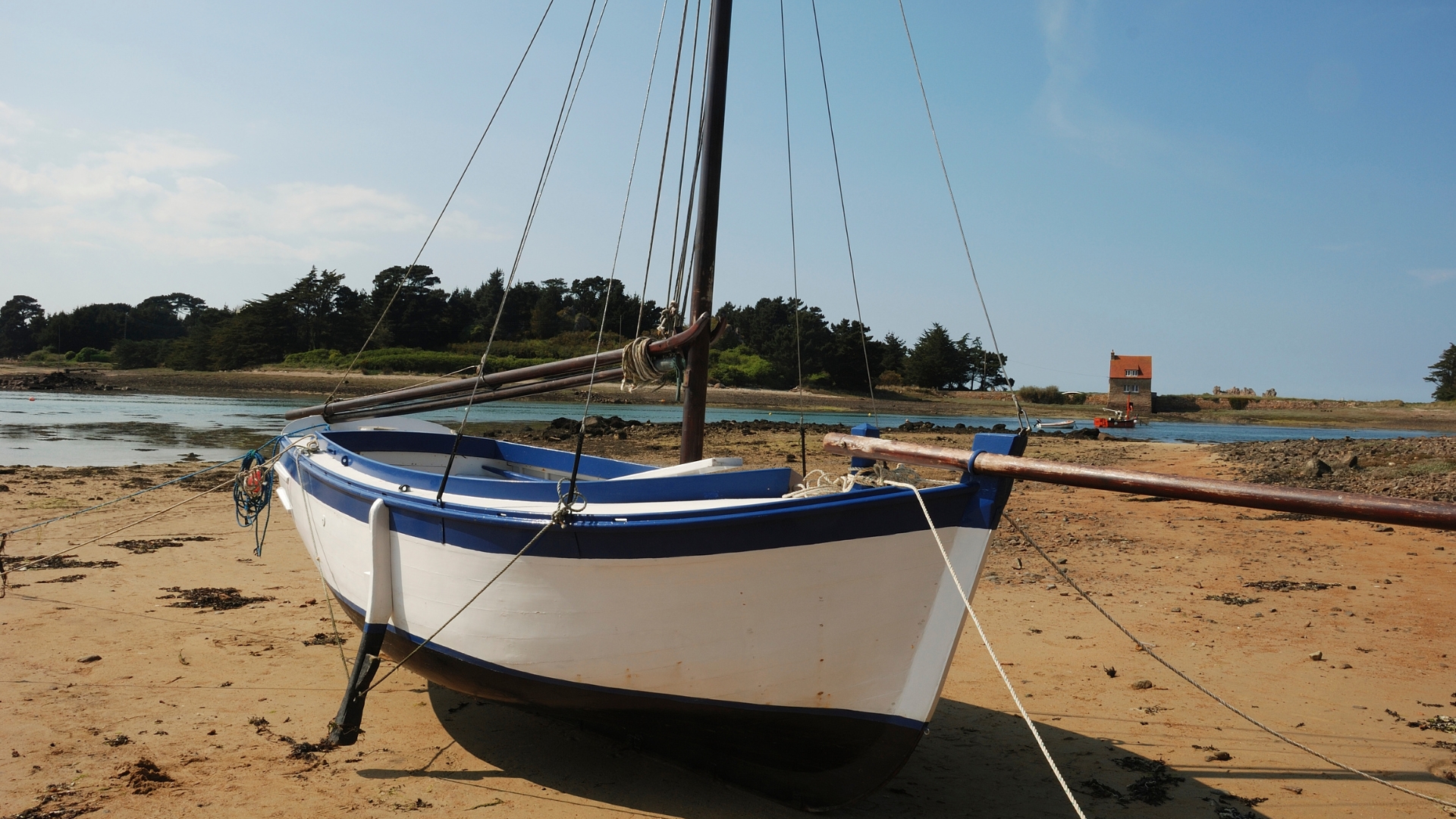Camping Le Varlen: a place steeped in history in Brittany
Our campsite in Côtes-d’Armor has a rich history that began a hundred years ago in Plougrescant. In 2025, Delphine and Ludovic took over the running of this authentic seaside campsite in Côtes-d’Armor.
From grocery store to campsite, a Breton story in Plougrescant
Early 20th century
Our serviced campsite in Plougrescant is the former grocery store, run by Françoise Le Coadou at the beginning of the XXe century. We can see the locals coming to deliver the small seaweed they collected at each tide, which was then sacked and sent to the factories to be processed.
It all began a hundred years ago, at the end of the First World War, when Françoise Le Coadou opened a grocery store-bar-family guesthouse in a small stone house. At the time, it was a popular place for Pors Hir where people come to shop and meet their neighbors. After the Second World War, a Mr Pierrès bought the business and continued to run it. We used to sell everything,” recalls Louis Poulen, a neighbor who used to come here to shop for his mother. Coal, early potatoes, bread, tar for the boats”.
At the end of the 50s
At the end of the 50s, Hubert Le Guen took over the reins of the business and also set up a cab business. He owned a 52-seater Berliet and a Citroën van, which he used to take farmers to all the markets in the canton, with a trailer in the back to transport animals. “He was also the ‘Breton cab’,” laughs P’tit Louis. In other words, he was employed by an oil company to take men to embark at Le Havre and bring them back at the end of their mission. He would take the sailors as far as Saint-Malo. Sometimes, he would also take the women to visit their men. In those days, sailors embarked for 10 months.
March 1967 and the Torrey Canyon
Then, in March 67, came the Torrey Canyon which ran aground off the British Isles and thousands of tons of oil polluted the Breton coastline. The military were sent in to clean up the mess, and some of them camped out on a plot of land adjacent to Hubert Le Guen’s cab business.
A revelation for P’tit Louis, who the following year, just fifty years ago, created the first sketch of a campsite on an adjacent plot of land. It was at the campsite that we had the first ecological lawnmower,” recalls P’tit Louis, a mocking gleam in his eye. It was a donkey that Le Guen had brought from Avranches in his car.”
A modern campsite in 1988
Years went by and, in 1988, Monsieur Lahilonne bought Le Varlen. No longer a cab business, just a small convenience store, but a truly modern campsite is developing. The new owner built a real sanitary block, installed a miniature golf course and bowling alleys. “The campsite took on a resort feel and was awarded 3 stars,” says Dominique.
Creation of a bar and entertainment room
Two years later, a new owner, Monsieur Demay from Paris, took over the campsite. He had big ideas, but they were a little expensive. He transformed the former boarding house into an independent studio and the cab building into a bar, bought a new plot of land to extend the campsite, and had the large entertainment hall built. Twice, he brought in comedian Pierre Doris to host evening events.
The first mobile homes
In 1993, the Montignys bought the Varlen and tried to breathe new life into it. They decided to rent out caravans and installed the first mobile homes. They introduced mussels and French fries evenings on Thursdays and lobster bingo evenings on Tuesdays. Finally, they rented out plots of land to people who set up their own mobile homes. They stayed for 11 seasons before handing the campsite over to Dominique and Claude.
2004, new activities, wifi and restaurant
Arriving in 2004, they decided to remove all the aging caravans and continue to develop mobile homes and land rental to “owners”. They also renovated the green spaces and further extended the campsite. Open between Easter and All Saints’ Day, it now boasts 13 rental pitches, 13 mobile homes and 26 bare pitches. While they have kept the mussels and French fries and bingo evenings, Dominique and Claude have added other activities (concerts, magic evenings, initiation to Breton dance, wooden games…) and connected the campsite to Wi-Fi in 2008. It was essential,” explains Dominique. We quickly decided to offer this service.
However, the crisis of 2008 also affected the campsite, and after a few years of reflection, the Carpentiers decided to offer catering. Dominique entered the kitchen and fed up to 70 people some evenings, assisted by her son Mathieu. Catering,” she explains, “really opened up the campsite to the locals. People from Plougrescant like to come and eat here.
The new generation since 2024: Delphine and Ludovic
After 8 years at the helm of a campsite in the Gard until 2024, we decided to move closer to our home region. From the first time we visited the Varlen campsite, we literally fell in love with this exceptional site and decided to settle here (in 2025) Let’s go!
Delphine and Ludovic Manseau
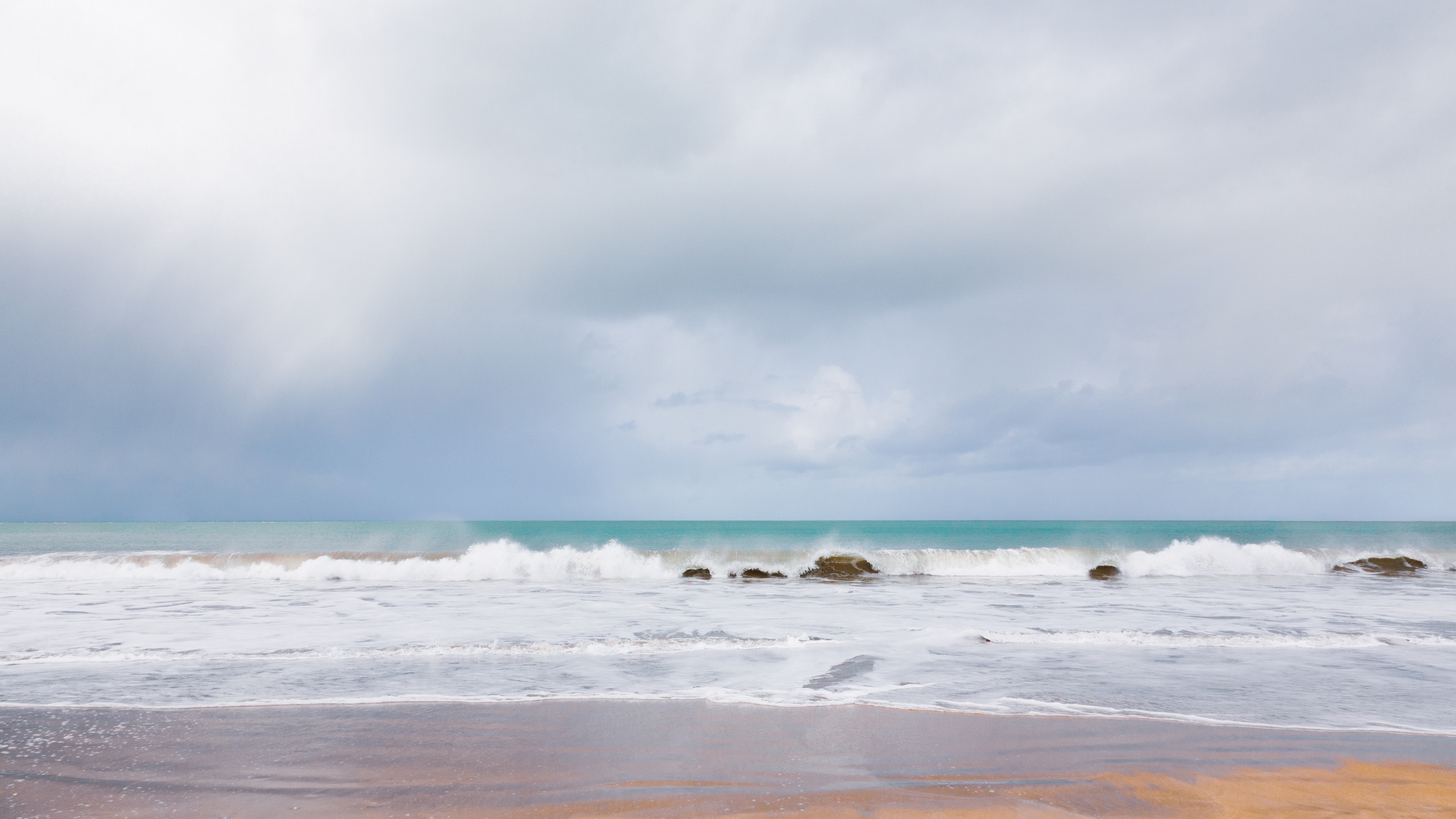
More than a campsite, an atmosphere and a place to live
It’s true that neighbors, like P’tit Louis, are happy to drop by, not only to eat but also to say hello, or to bring a surplus of peaches or a few salads. “People are sometimes surprised when we give them something,” points out Dominique, who closed the Varlen door with her head full of memories.
“Around 50% of holidaymakers come back year after year, and a family is created within the campsite. And then, when they arrive, sometimes they have worries or problems and we talk to them, they tell us things and that helps them. A campsite is very emotional.
Conviviality, at our campsite with authentic activities in Côtes-d’Armor, is the very essence of our place, which offers you mobile home rentals near Perros-Guirec or camping pitches in Plougrescant.
Plougrescant through history
The Saint-Gonery chapel is distinguished by its sloping spire. It was built in 1612, on top of the late 12th-century bell tower. The base, which wasn’t strong enough, tilted to one side, while the lead-covered spire tilted to the other.
Plougrescant is made up of two Celtic words: plou and grescan or crescan, meaning ” parish that expands, that grows “. For others, Crescant is a Breton emigrant leader who settled on the Plougrescant site in the early 6th century.
The commune of Plougrescant includes several listed islands: Ile d’Er, Ile d’Evinec, Ile d’Itron-Maria, Ile Loaven, Ile Verte and Ile Kerlabon.


